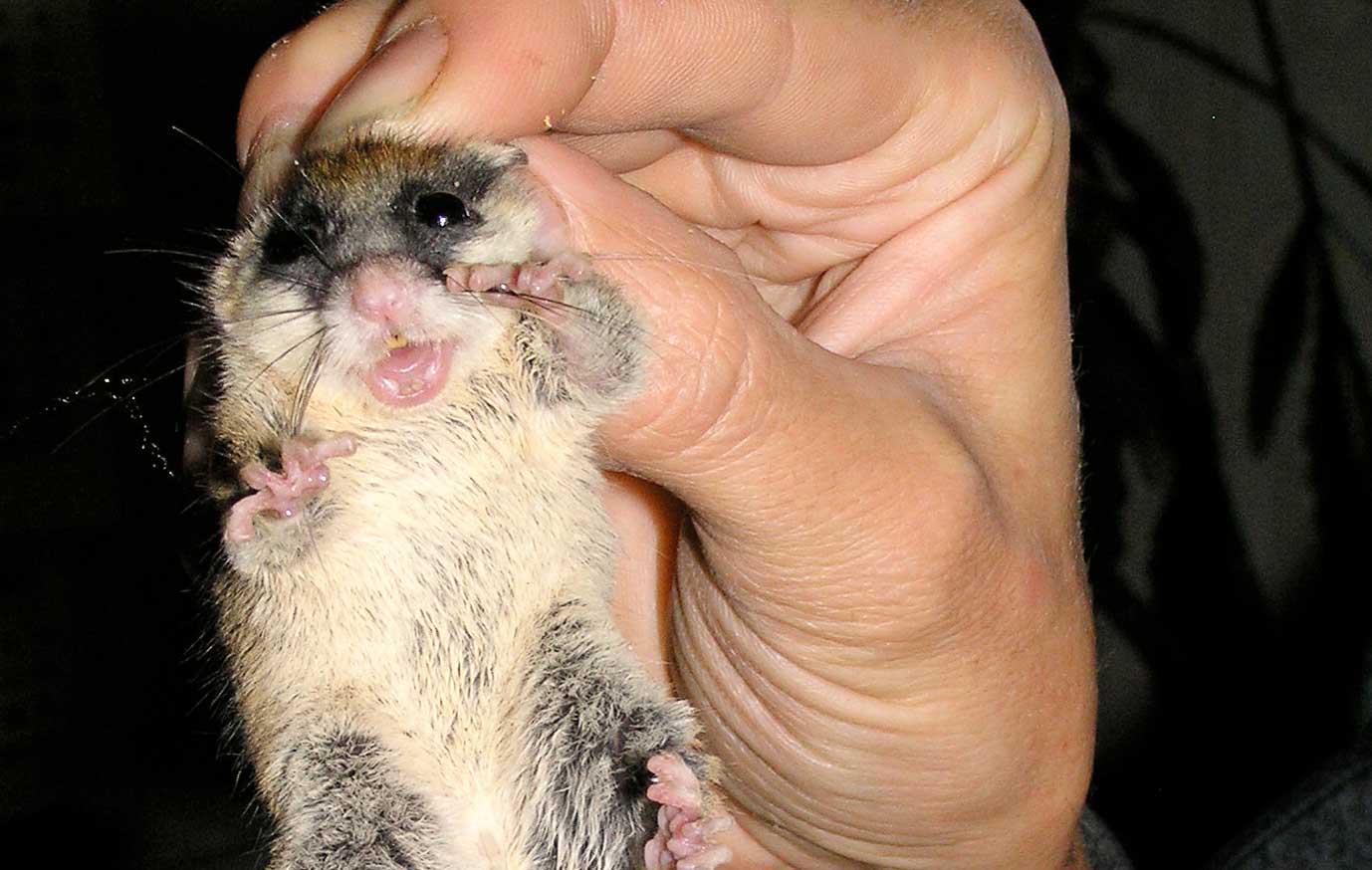
Belarus
I spent 5 days in Belarus in late August 2006. My first trip to Eastern Europe.
The Country
Belarus is famous for its Internet Brides, its ‘dictator’ and, umm…. Arriving into Minsk you are greeted by stony-faced passport control officers who pore in grim silence and with painstaking detail over each and every passport. When passport officers retire they go on to work at hotel reception desks, internet cafes, and grocery store checkouts. They are spectacularly good at saying “niet” and turning their back on you with a hrmmph when you ask if they speak any English. Maybe this isn’t so very different from Paris, but it was a world away from Colombia where I’d been a few days earlier.
Minsk, the capital, might be the most dismal city I’ve ever visited (and remember that I’ve been to Wolverhampton). Perhaps that is why some of Minskers seem hostile. I thought about this hostility quite a lot when I was there. Was it because Belarus is still being run as a command economy> Was it because it isn’t as much of a command economy as it once was. Or was it because people eat cabbage for breakfast? Who knows? But the Minsk architecture – drab 1960s low rise tower blocks – cannot help lift people’s spirits.
Having said that, things were a lot more pleasant outside the capital. Some people smiled now and again in the countryside, and there didn’t seem to be a total absence of trust.
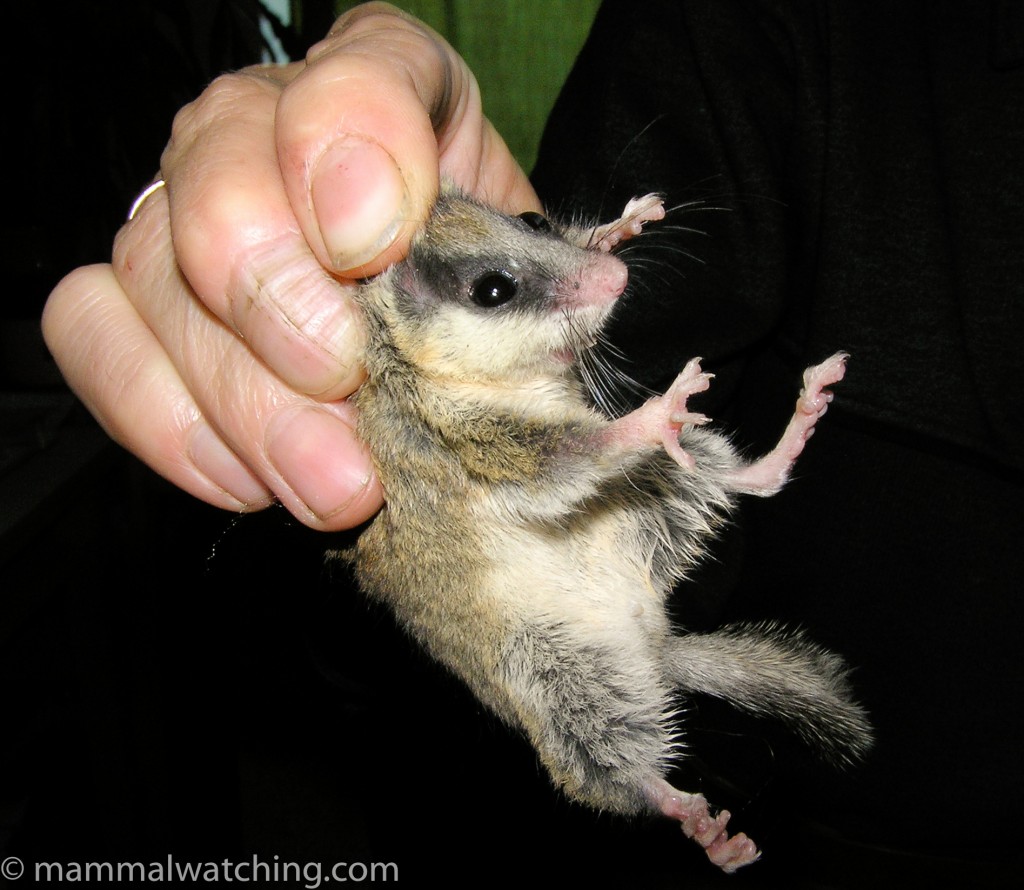
Forest Dormouse, Dryomys nitedula
Food and lodging outside of Minsk were also very cheap: I fulfilled a life’s ambition by announcing in the Berezinsky hotel bar/nightclub one night that I’d shout everyone a drink. It was admittedly a tiny bar and the nightclub was in fact a small stereo system and a space between some tables. But at least I got to say ‘ the drinks are on me’. And the seventeen beers cost me less than 15 euros. The food, other than breakfast, was also surprisingly good. And if you like cold frankfurters, cold rice, or spaghetti and cabbage for brekky then you’ll enjoy that too. In fact on the last day we ordered some outstanding pancakey things for breakfast – I wish I’d learnt of them sooner.
In late August, Belarus is a nation obsessed with mushrooming. Everywhere I went I saw swarms of people entering into, or emerging from, the forest carrying baskets and bags empty or full of fungus.
Berezinsky Biosphere Reserve
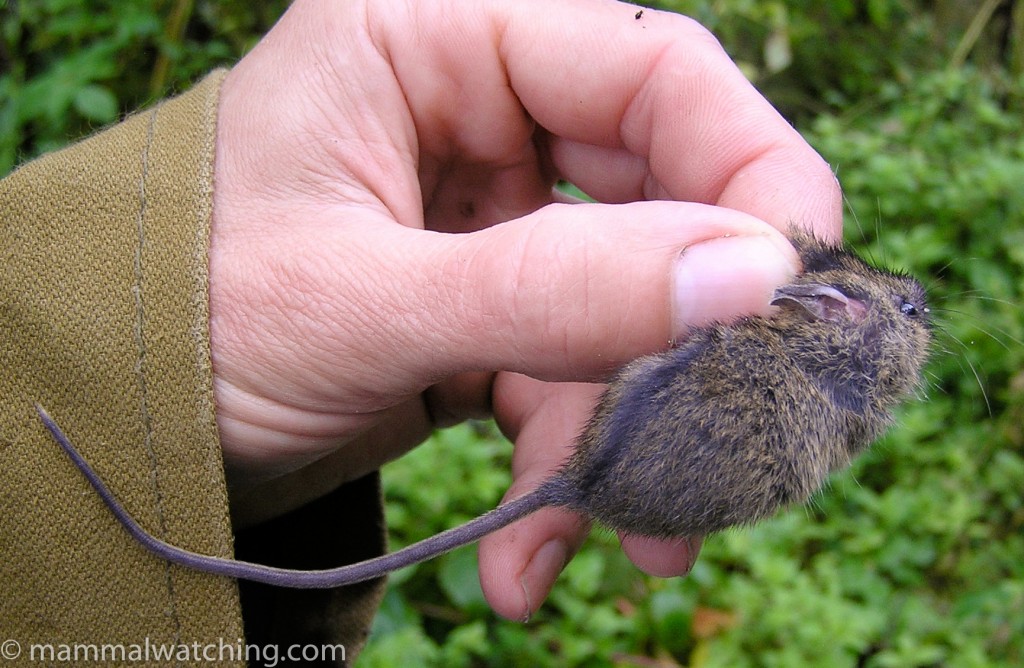
Northern Birch Mouse, Sicista betulina
I got out of Minsk as quickly as I could and took a trip to Berezinsky Biosphere Reserve, which is about a two and a half hour drive north of Minsk. I’d arranged the trip through a company called Belarus Ecotours, where I’d corresponded with Andrei Kamoska, who arranged a program for my stay and was my guide/driver and translator. Andrew spoke pretty good English, and while not particularly knowledgeable about the wildlife was interested. He was also cheap – his services, including the car and all fuel, were 40 euros a day.
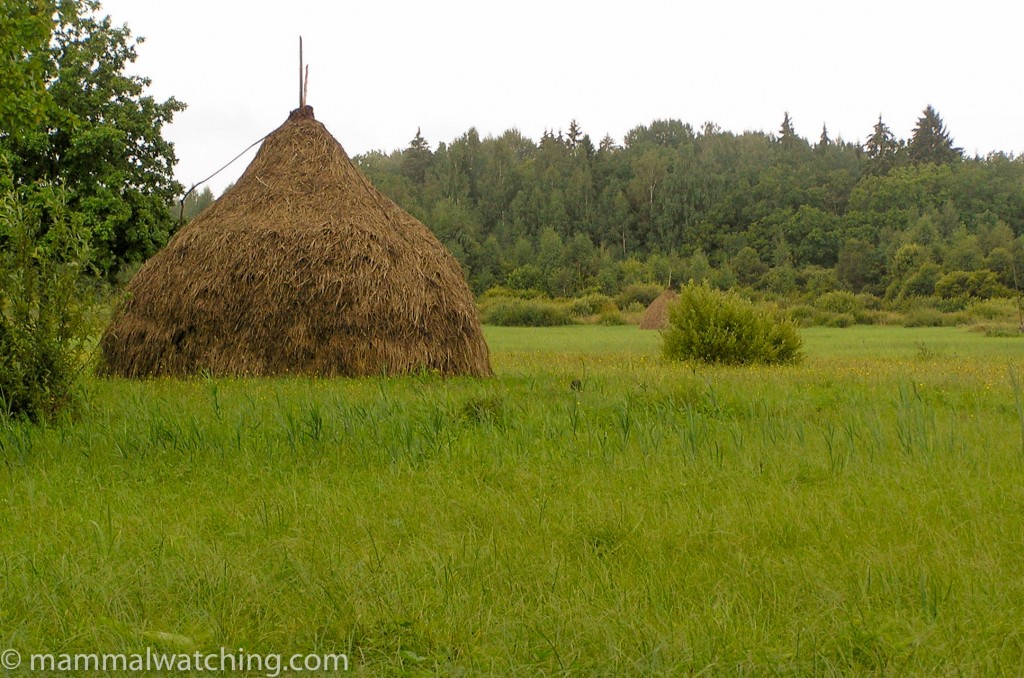
Berezinsky haystacks
Berezinsky is 800 square kilometres of swamp and – mainly coniferous – forest that harbours 56 mammal species including most of the ‘best’ stuff from central Europe. There’s a small population of European Bison, along with Brown Bears, Wolves, Lynxes, European Beavers and European Mink to name a few. There’s also an ugly but comfortable hotel at the park HQ which serves good food. And various guides/scientists are on hand and can help find the animals.
Alexander Kastalian, the reserve’s chief mammalogist, was assigned to look after me. He’s a real expert, knows lots about the bats and small mammals in the park as well as the larger stuff and went out of his way to try to show me some of the things I wanted. I definitely recommend meeting him if you visit the park.
Unfortunately I discovered when I had arrived that it was a bad time of year to see mammals:the ‘half dead’ season. Great. And the weather was abysmal too. It started raining half an hour before I reached the park on Wednesday afternoon and didn’t stop until Friday evening. So the first couple of days were not the best. Trudging through ankle deep pools of water, underlain with deeper mud, in the pouring rain, through clouds of heavy duty mosquitoes (I’ve only seen bigger ones in Kakadu) might have been tolerable if there were any animals around. There weren’t.
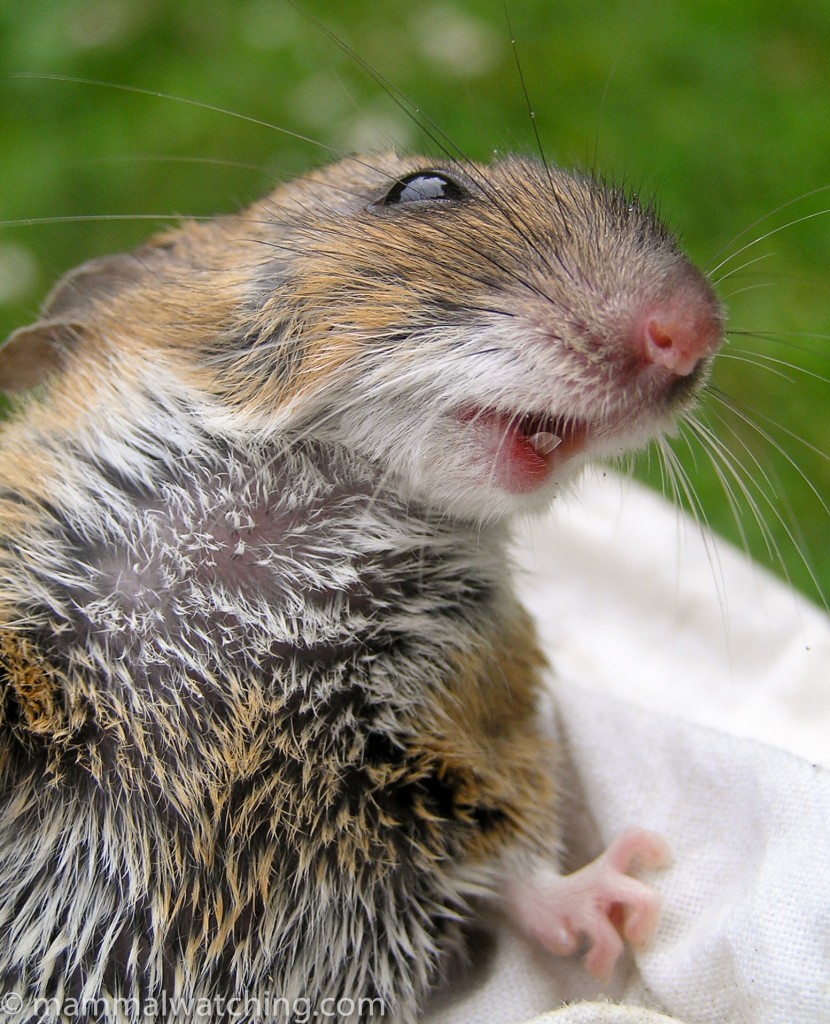
Yellow-necked Mouse, Apodemus flavicollis
I spent a wet evening on a boat trip along the Berezina river and saw at least 3 European Beavers and not a lot else. European Mink are seen occasionally along the river – apparently early winter is a good time to look when the ice is forming. Mink tend to frequent the few remaining spots of open water.
On my second evening the rain slowed to a drizzle for an hour or two, and Andrew and I went out for short spotlight drive near the park HQ. We saw a Water Vole on the road, a couple of Hares, a Red Fox and also found a Northern White-bellied Hedgehog (Erinaceus roumanicus). These are apparently easy to spot in better weather so we were quite lucky to see one in the rain.
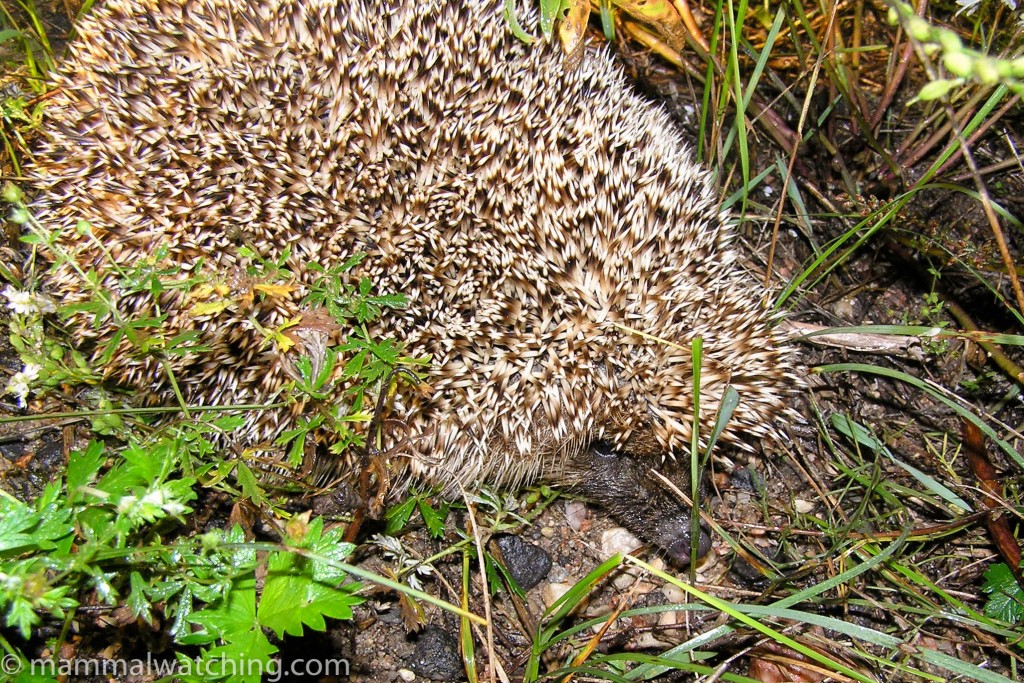
Northern White-bellied Hedgehog, Erinaceus roumanicus
The park has nest boxes Forest Dormice, one of my key targets. I’d imagined that the boxes had been up for a while and would be stuffed full of animals. But they’d only gone up in May and none had been used as yet.
We spent Friday morning checking the boxes, many of them for the first time. This involved more trudging through mud and mosquitoes with the added bonus of carrying a ladder and listening to Alexander climb up a ladder, open the box and say “Nothing” 40 times. Groundhog day for mammal watching.
But it is always darkest before the dawn. Later that afternoon the sun came out and Berezinsky was transformed. The mosquitoes disappeared and the place was wonderful. Even better the weather was at last good enough to set some traps so Alexander stuck out 50 of his wooden traps baited with bread and I stuck out a dozen Elliot metal box traps, baited with peanut butter and oats.
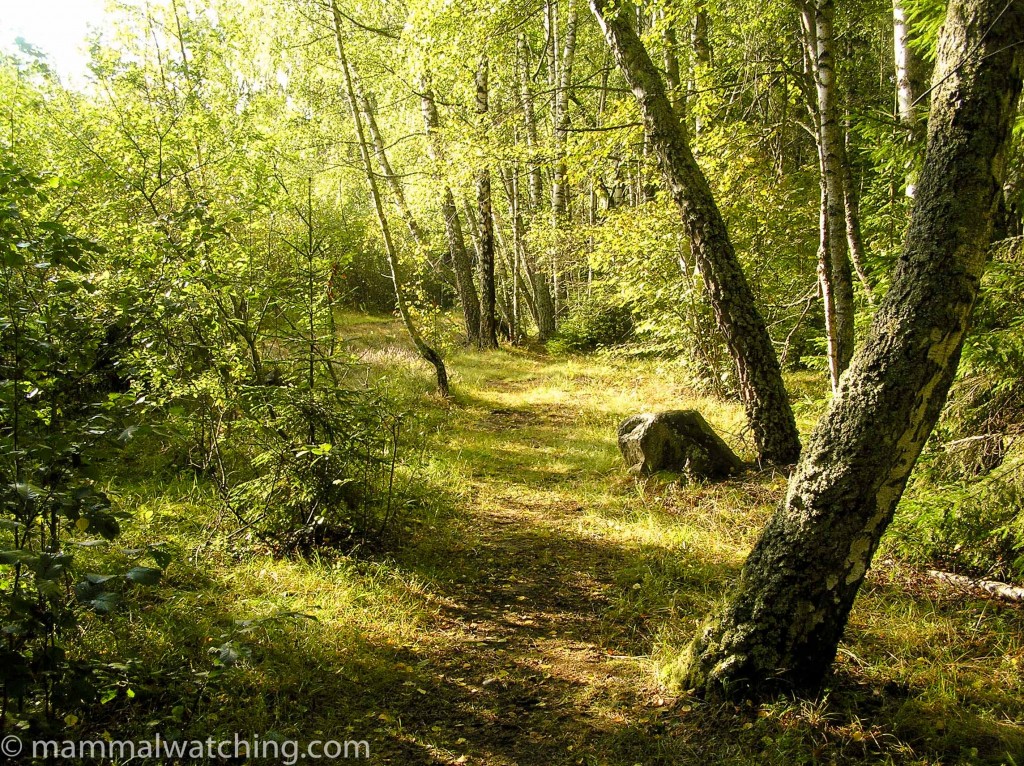
Berezinsky sunshine
That evening we took a spotlight drive again and saw some Red Deer near Nivke village. At the Park HQ there were several Liesler’s Bats buzzing around the street lamps easily identifiable from their very loud echolocation on the bat detector. My second new mammal of the trip. There were also some Common Pipistrelles and a Myotis species (maybe Whiskered Bat, Myotis mystacinus) near Nivke village.
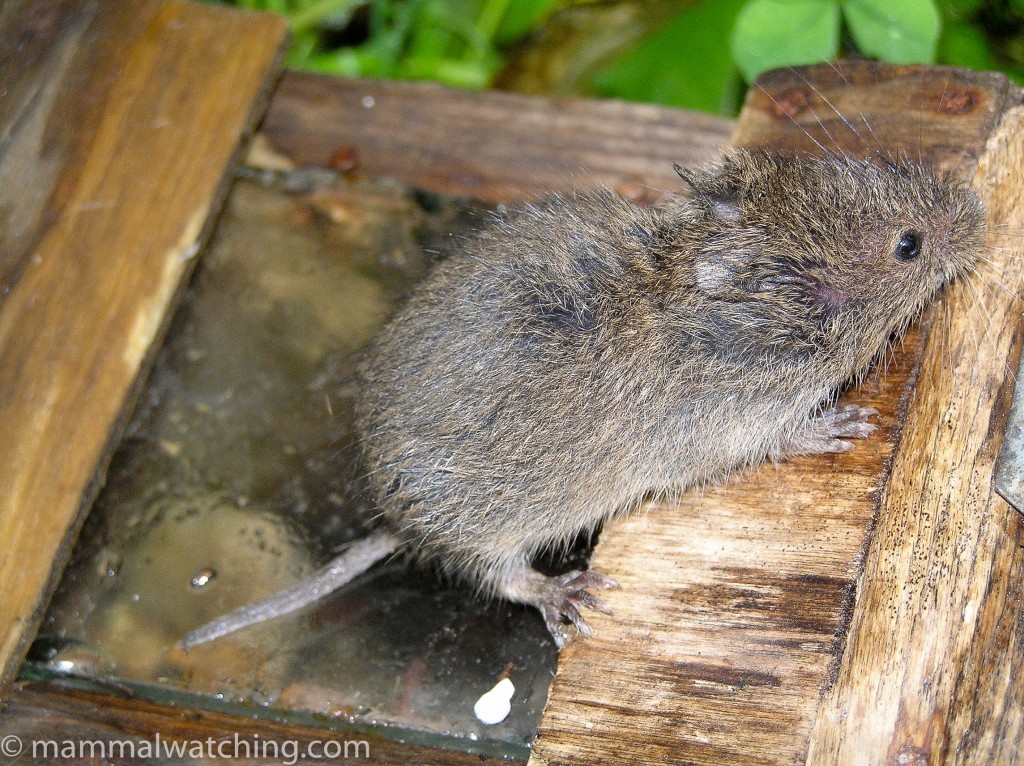
Common Vole, Microtus arvalis
The trapping overnight had been productive. Over half the traps I’d set had Yellow-necked Mice and Bank Voles. Meanwhile Alexander caught a stack of Common Voles at one site (new for me) and, at another site near the Park HQ, he got more Yellow-necked Mice plus a Northern Birch Mouse. The latter was an exciting find for both of us – in 10 years of trapping he had only caught one the month before.
In the very last trap he caught a fabulous Forest Dormouse. Yay!
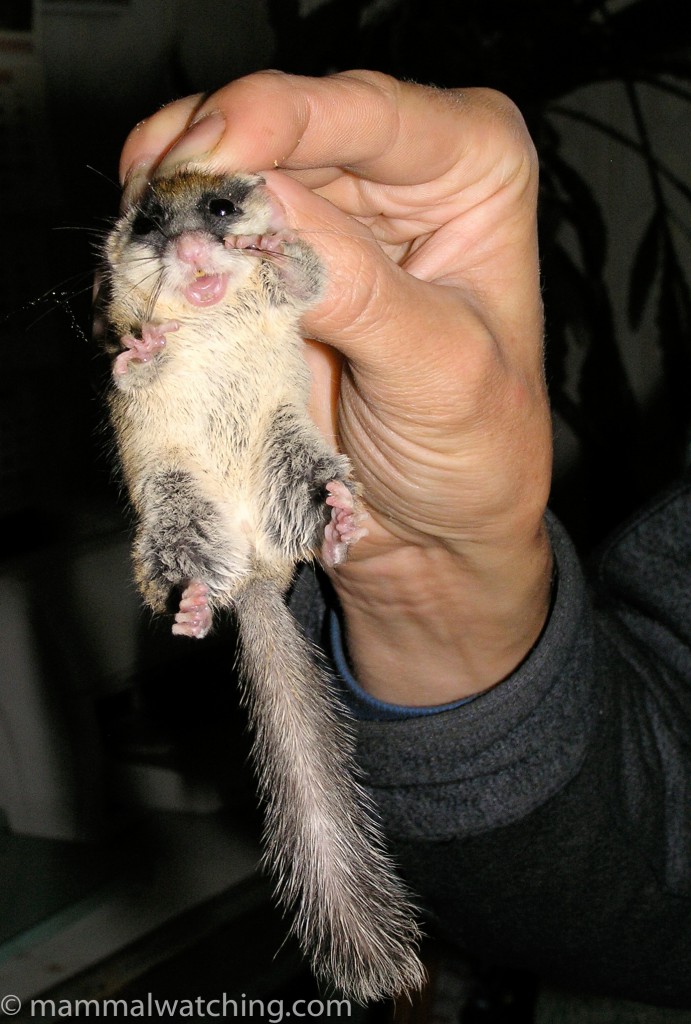
Forest Dormouse, Dryomys nitedula
We returned to the southern bit of the park to have a half-hearted look for European Bison. But it was noon and we only had a few hours. There are fewer than 40 animals in the park and they are hard to track down at this time of year and even harder at that time of day. I saw one in the dismal park zoo though.
I’d like to go back to give Berezinsky another shot a better time of year in better weather or in the winter when there must be a decent chance for Lynx. It would be good to catch up with Alexander again too.
Stuff I Missed
If you want to see European Bison, which are probably wilder here than anywhere else, then late Autumn and Winter are the best times to look. They can be tracked down in the summer and during good weather often emerge from the forest at dusk to graze in a few known spots.
Small mammals are at their most plentiful in September and early October. Shrew populations are cyclical and 2006 was a ‘low’ year. On top of the stuff we trapped, the small mammal fauna includes Masked (Laxman’s) Shrew Sorex caecutiens, Common and Miller’s Water Shrew (the latter quite uncommon), and Pygmy Shrew (rare). There are also Field Voles (uncommon), Striped Field Mice (trappable at a few spots I think), and Root Voles (not sure how often these are caught).
The park has some excellent carnivores. Lynxes and Wolves are hard to find at any time of the year. Smaller carnivores, including Racoon Dogs (a feral population) and Polecats are best found from May to early July apparently.
Brown Bears are around but again quite difficult to see. Elk (i.e Moose) are more watchable as are Wild Boar but there are better places to find these species.
Community Reports
Belarus, 2015: Europe’s Big 5, 9 days primarily looking for Lynx. They just missed the cat but did see 10 species including Wolf, Polecat, Beaver and Bison.
Belarus, 2013: Keith Millar, 2 weeks & 20 species including Wolf, Polecat and Parti-coloured Bat.
Belarus, 1990: Vladimir Dinets, several trips with species including Tundra Vole, European Polecat and Northern Birch Mouse.
Also See
Please email me if you have tips for mammal watching in this area.


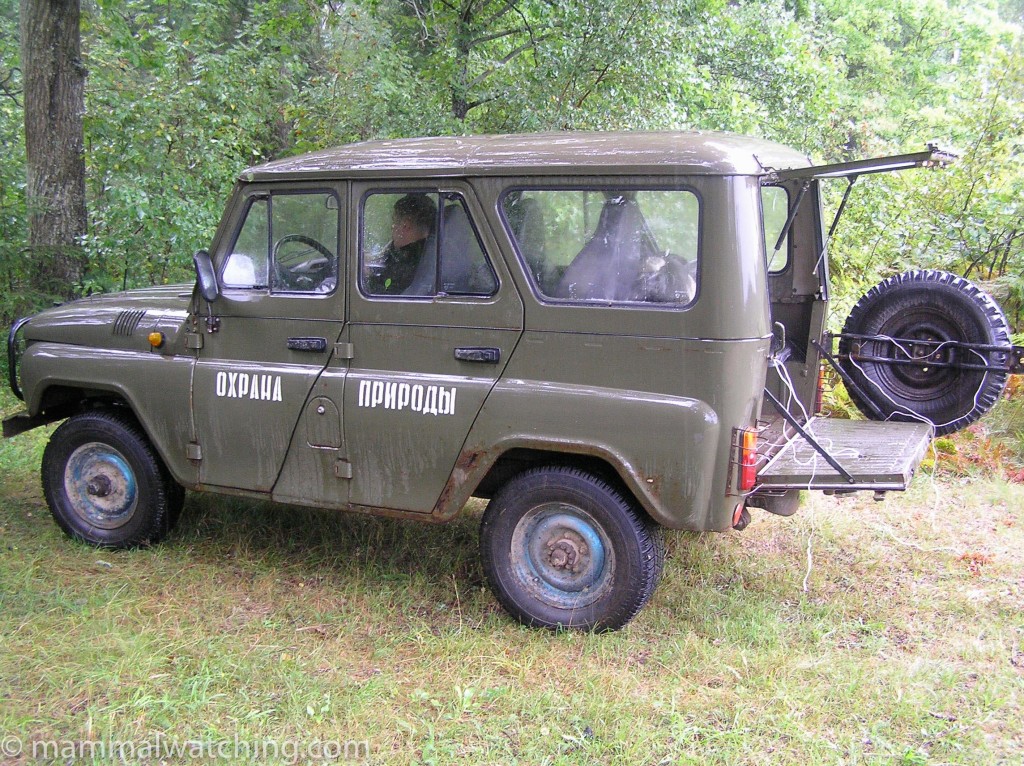
Leave a Reply
You must be logged in to post a comment.